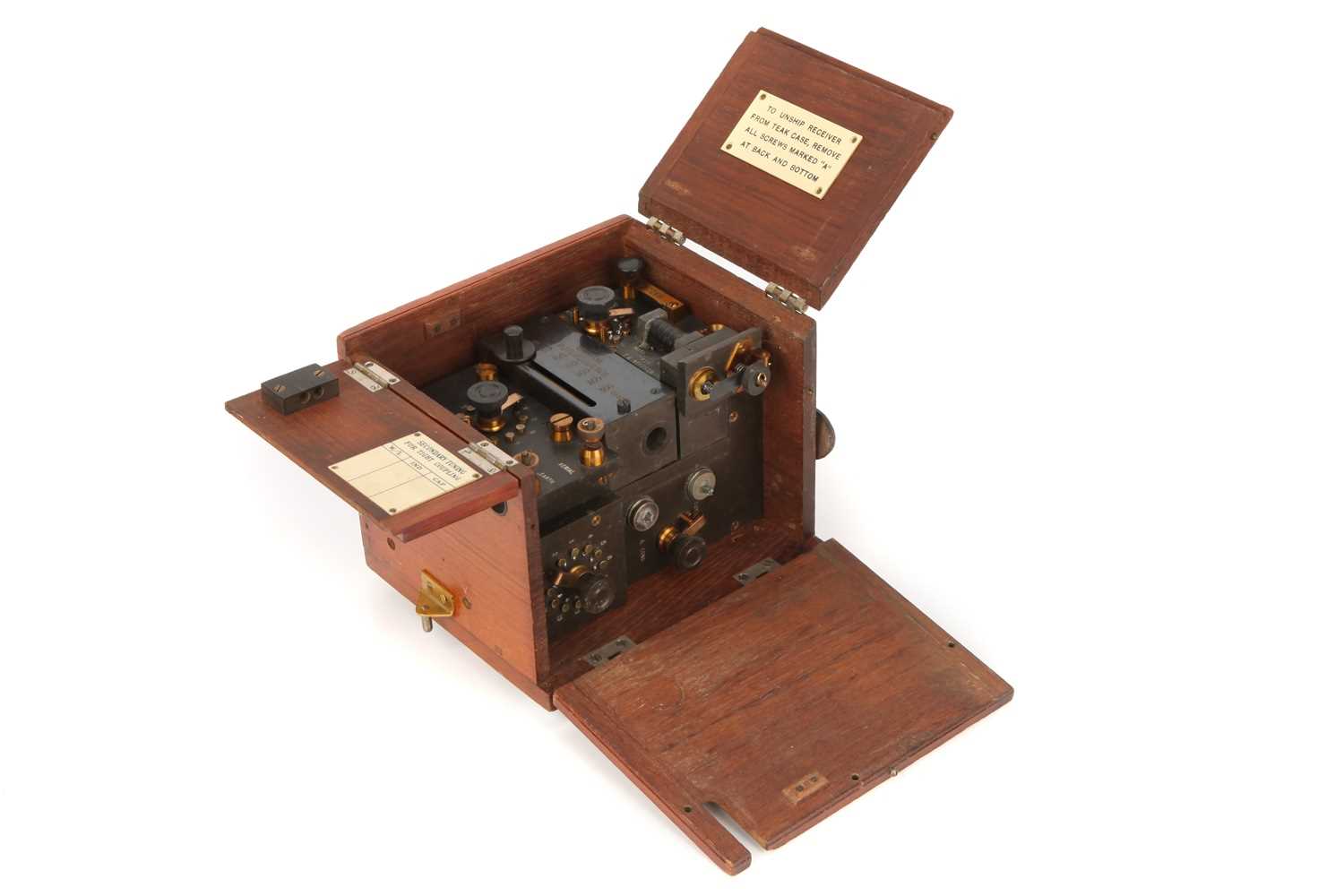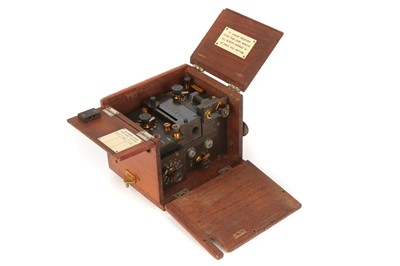1st Nov, 2018 12:00
Fine Photographica & Instruments of Science & Medicine
A WW1 Aircraft Crystal Radio Receiver
c.1917, English, signed on plaque to lid 'W/T RECEIVER MODEL Tb. No. 587 JOHNSON & PHILIPS Ltd LONDON', magneto choke can be removed and is engraved 'RAF W/T KIDBROOK KENT No. 249' W/T'' (stands for Wireless Telegraphy), case constructed of French polished teak with nickel-plated brass fitting to outside, all parts are made of vulcanite with all lacquered brass fittings, complete with a separate case of crystals on screw-in bases, width 18cm
Footnote:
Most crystal sets date from the early 1920's when broadcasting first started. They were used as a cheaper alternative to the early valve and battery receivers. Before this, radio had only been developed as a form of transmitting Morse signals by spark transmitters and simple receivers that used crystals, magnetic detectors or cohers.
This crystal set dates from around WW1 and was used in early aircraft for receiving Morse signals. The set has mounting brackets to the outside of the case identical to others seen on early aircraft receivers. As the receivers were so delicate they were suspended on these fittings using elastic bands to protect them from vibration.
Sold for £1,920
Result plus buyers premium
c.1917, English, signed on plaque to lid 'W/T RECEIVER MODEL Tb. No. 587 JOHNSON & PHILIPS Ltd LONDON', magneto choke can be removed and is engraved 'RAF W/T KIDBROOK KENT No. 249' W/T'' (stands for Wireless Telegraphy), case constructed of French polished teak with nickel-plated brass fitting to outside, all parts are made of vulcanite with all lacquered brass fittings, complete with a separate case of crystals on screw-in bases, width 18cm
Footnote:
Most crystal sets date from the early 1920's when broadcasting first started. They were used as a cheaper alternative to the early valve and battery receivers. Before this, radio had only been developed as a form of transmitting Morse signals by spark transmitters and simple receivers that used crystals, magnetic detectors or cohers.
This crystal set dates from around WW1 and was used in early aircraft for receiving Morse signals. The set has mounting brackets to the outside of the case identical to others seen on early aircraft receivers. As the receivers were so delicate they were suspended on these fittings using elastic bands to protect them from vibration.
Auction: Fine Photographica & Instruments of Science & Medicine, 1st Nov, 2018






